Introduction
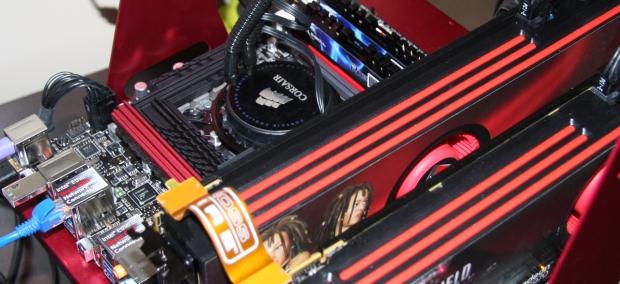
Unlike most performance motherboards that by default carry only an x8 / x8 setup when SLI or CrossFire X is used, the ASUS Maximus IV Extreme offers us the NF200 chip to add more PCI-E lanes to the board. Over the last few years we've seen companies implement the chip to boards to help move the default SLI or CrossFire X setup from x8 / x8 which is offered via the Intel chipset, to x16 / x16 via the NF200 chip.
When you move away from a two card setup and into a three card one, boards without the NF200 chip would run x8 / x8 / x4, while with the NF200 we're able to achieve x16 / x8 / x8 which when having so much power on hand, is extremely appreciated.
ASUS do it a little differently, though, and they do it in a way that has confused people. On the Maximus IV Extreme and Extreme-Z, their P67 and Z68 boards, by default they offer x8 / x8 via the Intel chipset. It isn't until you add a third card into the mix that the NF200 chip comes in handy, because in that situation we get a x8 / x16 / x16 setup.
The specifications for multi GPU setups on the Maximus IV Extreme(-Z) boards is 4 x PCIe 2.0 x16 (x16, or dual x8, or x8, x16, x16). So in other words, if you're using one video card, it runs at x16; if you use two or run "dual", it's x8 / x8, and if you run three it's x8 / x16 / x16.
What people asked was, why does ASUS who offers the NF200 chip on these boards opt for a x8 / x8 setup in a dual card situation, when any other company with a dual GPU setup would make use of the NF200 chip and go for a z16 / x16 setup?
Well, ASUS say the way they do it is faster. Huh!?!?! x8 / x8 is slower than x16 / x16, though? - Yes, but because the NF200 chip piggy backs onto the Intel chipset, they say a certain amount of lag is added because another chip is being thrown into the mix.
A good way to look at it is we've got two runners in a 100m race. The x8 / x8 Intel runner is slower overall in straight out speed, but the x16 / x16 NF200 runner has hurdles in his lane and while he can run faster, because he has to jump hurdles (i.e. go through the Intel chip) he's overall actually a little slower.
It makes sense in theory, but before we start to believe that x8 / x8 through the Intel chipset is better than x16 / x16 through the NF200 chip, we need to test it for ourselves. So jump forward to the next page and find out exactly how we go about testing this before we get stuck into the benchmarks to see if there's actually any difference.
Test System Setup
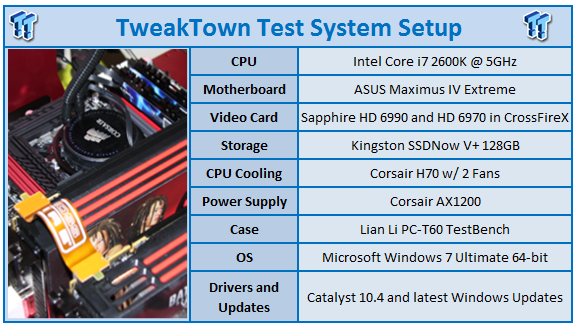
We would like to thank the following companies for supplying and supporting us with our test system hardware and equipment: Intel, ASRock, Kingston, Mittoni, Noctua and Corsair.
Using the Maximus IV Extreme we're able to use the same board to test the difference between both setups. What this does is help us eliminate everything else from impacting our results. We've got exactly the same motherboard, chipset, CPU, VGA setup etc.; everything is identical except the slots our cards are in when we run the tests.
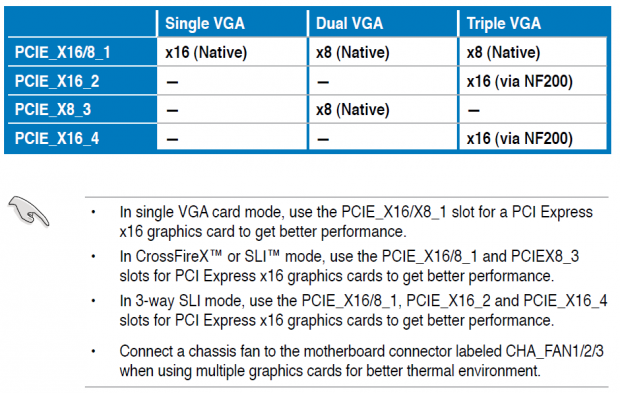
Above you can see the information in the ASUS Maximus IV Extreme manual regarding the VGA setup. This is page 47 and you can see when using one card they recommend you use PCIE_X16/8_1 (Slot 1) which will result in the card running at x16 via the "Native" chip, which is the Intel P67 chip in this case. Going for two cards, they say the same slot again and PCIE_X8_3 (Slot 3) which will result in a x8 / x8 setup via the "Native" P67 chip again.
If you're going for a triple VGA setup, you can see we continue to use the first slot PCIE-X16/8_1, but for the other two cards we need to use PCIE_X16_2 (Slot 2) and PCIE-X16_4 (Slot 4) to have each card run via the "NF200" chip.
Well, that seems kind of dumb; why don't we just use slot 2 and 4 and get x16 / x16 via the NF200 instead of x8 / x8 via the Native P67 chip? Exactly, why not? - That's exactly what we're going to do today.
What we've got is the most optimized dual card setup we've tested as far as I'm concerned; the HD 6990 and HD 6970. Three GPUs across two video cards. HD 6990 in CrossFire X while faster, is only ever so slightly faster for the most part and not worth the money over the HD 6990 + HD 6970 setup. The GTX 590 in SLI we haven't tested, hence why we're saying the most optimized dual card setup we have tested.
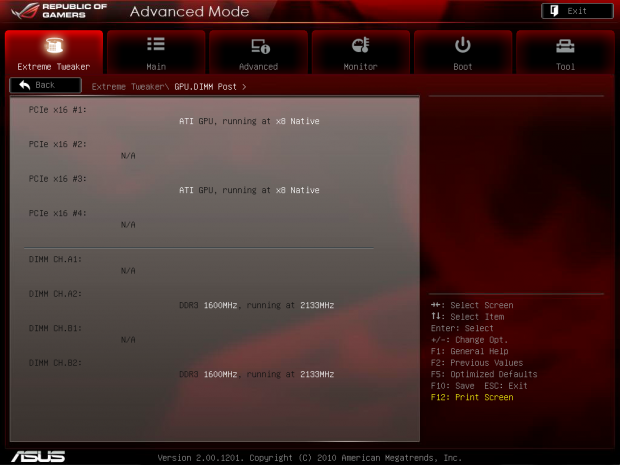
Sliding our cards into Slot 1 and Slot 3, what ASUS recommend we have our setup running at x8 / x8 via the "Native" Intel P67 chip. If we go into the BIOS we can see this via the GPU.Dimm option.
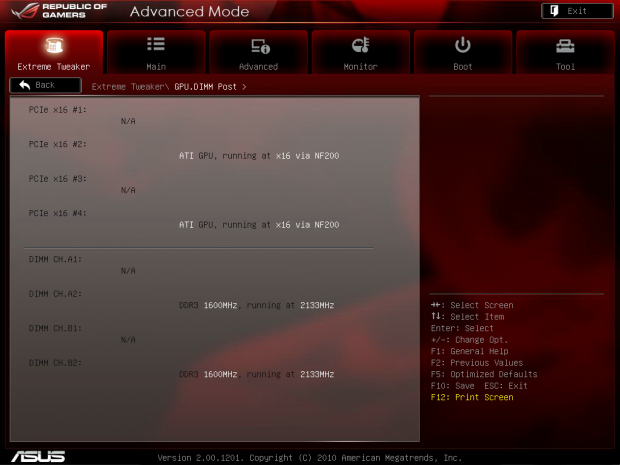
Once we've tested with that setup, we put our cards in Slot 2 and Slot 4, the setup that ASUS don't recommend; and the setup according to them which will run slower. Looking in the BIOS again, you can now see we're running at x16 / x16 via the NF200 chip.
To help remove any CPU limitations, we pushed our 2600k up to 5GHz via a 50x multiplier. Apart from that, there are no other real surprises; we're using the ultra-sleek CL7 Ripjaws X kit from G.Skill running at 2133MHz DDR and everything is installed on our Kingston SSD drive.
So with everything running as it should, it's time to check out our benchmark line up which today concentrates on some of the more intensive tests, including 3DMark 11, Heaven 2.5, Lost Planet 2 and Aliens vs. Predator. This helps make sure we're taxing our GPUs as much as possible. Along with these, we've included just two less intensive benchmarks; the older 3DMark Vantage and Street Fighter IV.
So let's find out, is running via the Native Intel chip at x8 / x8 faster than running through the higher speed x16 / x16 NF200? Or is it just a bunch of marketing mumbo jumbo?
Let's get started!
3DMark 11
Version and / or Patch Used: 1.0
Developer Homepage: http://www.futuremark.com
Product Homepage: http://www.3dmark.com/3dmark11/
Buy It Here
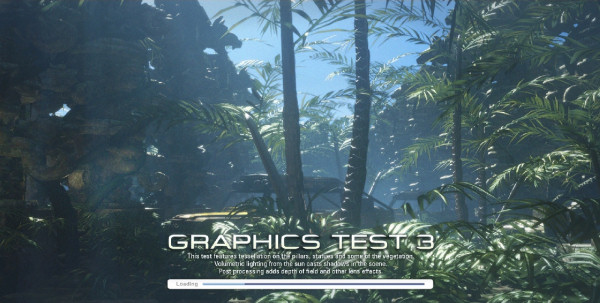
3DMark 11 is the latest version of the world's most popular benchmark. Designed to measure your PC's gaming performance 3DMark 11 makes extensive use of all the new features in DirectX 11 including tessellation, compute shaders and multi-threading. Trusted by gamers worldwide to give accurate and unbiased results, 3DMark 11 is the best way to consistently and reliably test DirectX 11 under game-like loads.
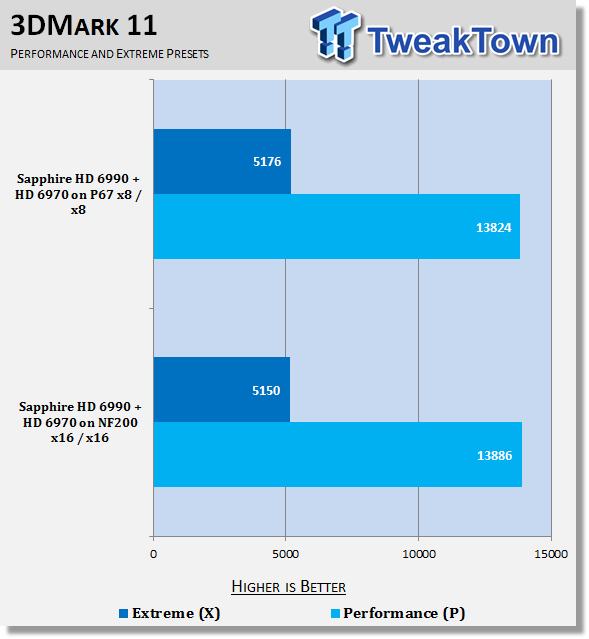
Under 3DMark 11 we can see that performance is very close to each other. The difference between scores we would put down to nothing more than a bit of fluctuation.
3DMark Vantage
Version and / or Patch Used: 1.0.1
Developer Homepage: http://www.futuremark.com
Product Homepage: http://www.futuremark.com/products/3dmarkvantage/
Buy It Here
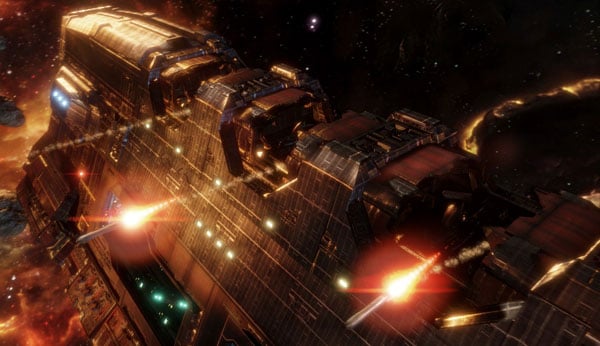
3DMark Vantage is the new industry standard PC gaming performance benchmark from Futuremark, newly designed for Windows Vista and DirectX10. It includes two new graphics tests, two new CPU tests, several new feature tests, and support for the latest hardware.
3DMark Vantage is based on a completely new rendering engine, developed specifically to take full advantage of DirectX10, the new graphics API from Microsoft.
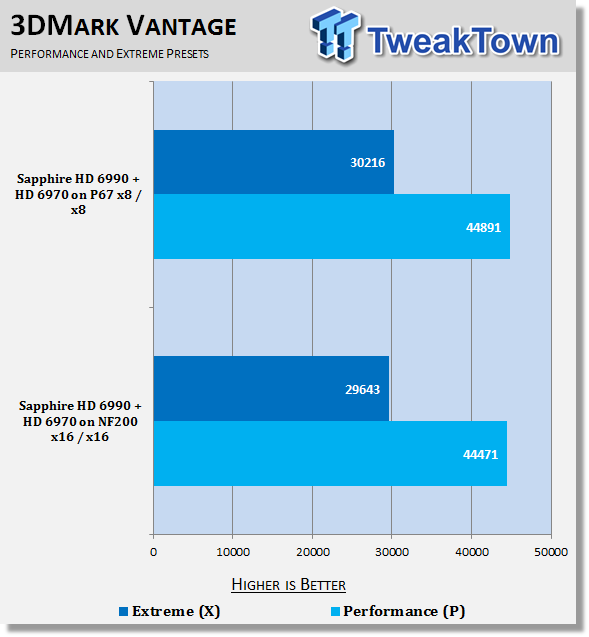
Under 3DMark Vantage we can see that the x8 / x8 shows a little extra speed, but we're dealing with quite large numbers here that we probably wouldn't put past fluctuation.
Unigine Heaven Benchmark
Version and / or Patch Used: 2
Developer Homepage: http://www.unigine.com
Product Homepage: http://unigine.com/press-releases/091022-heaven_benchmark//
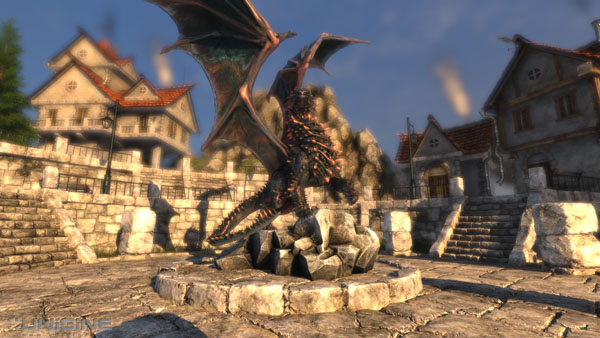
New benchmark grants the power to unleash the DirectX 11 potential in the gift wrapping of impressively towering graphics capabilities. It reveals the enchanting magic of floating islands with a tiny village hidden in the cloudy skies. With the interactive mode emerging experience of exploring the intricate world is ensured within reach. Through its advanced renderer, Unigine is one of the first to set precedence in showcasing the art assets with tessellation, bringing compelling visual finesse, utilizing the technology to the full extend and exhibiting the possibilities of enriching 3D gaming.
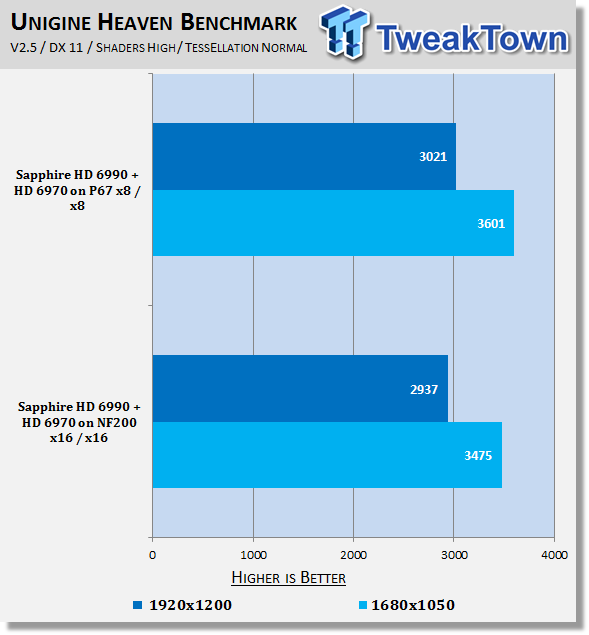
Now we start to get into something quite intensive and you can see that there's a clear boost in performance at both presets. It's not huge by any means, but it's clear and that's the most important thing.
Benchmarks - Lost Planet 2
Lost Planet 2
Version and / or Patch Used: Benchmark Demo
Timedemo or Level Used: Built in Benchmark - Test A Scene 1
Developer Homepage: http://www.capcom.com/
Product Homepage: http://www.lostplanet2game.com/
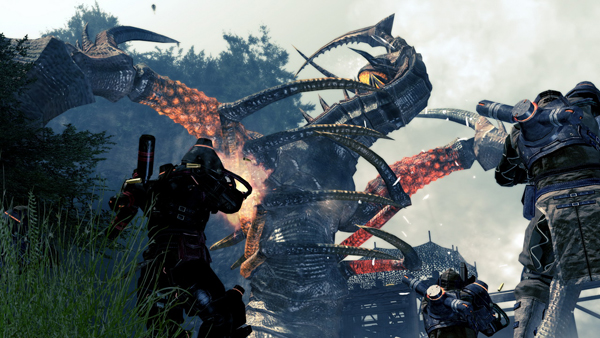
Lost Planet 2 is a third-person shooter video game developed and published by Capcom. The game is the sequel to Lost Planet: Extreme Condition which is also made by Capcom, taking place ten years after the events of the first game, on the same fictional planet. The story takes place back on E.D.N. III 10 years after the events of the first game. The snow has melted to reveal jungles and more tropical areas that have taken the place of more frozen regions. The plot begins with Mercenaries fighting against Jungle Pirates. After destroying a mine, the Mercenaries continue on to evacuate the area, in which a Category-G Akrid appears and attacks them. After being rescued, they find out their evacuation point (Where the Category-G appeared) was a set-up and no pick up team awaited them. The last words imply possible DLC additions to the game, "There's nothing to be gained by wiping out snow pirates... unless you had some kind of grudge."
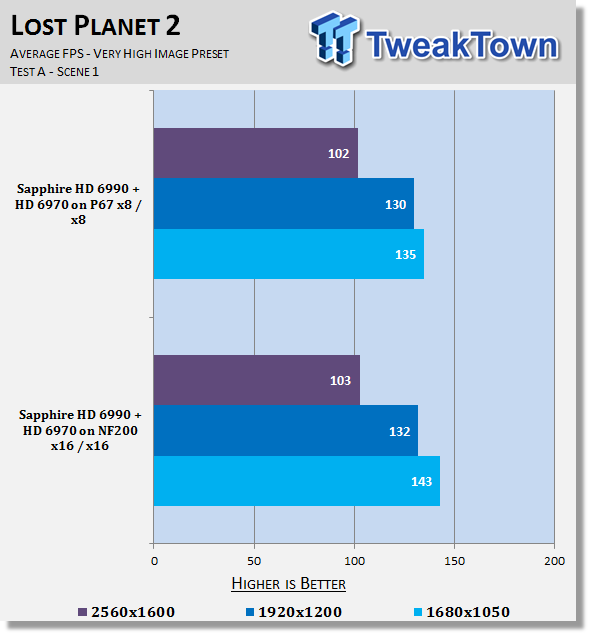
It's interesting to see under Lost Planet 2 that the x16 / x16 NF200 setup comes out ahead, especially at the lowest resolution. At the highest there's only an FPS between the two setups.
Benchmarks - Aliens vs. Predator
Aliens vs. Predator
Version and / or Patch Used: Standalone Benchmark
Timedemo or Level Used: Built in Benchmark
Developer Homepage: http://www.rebellion.co.uk/
Product Homepage: http://www.sega.com/games/aliens-vs-predator/
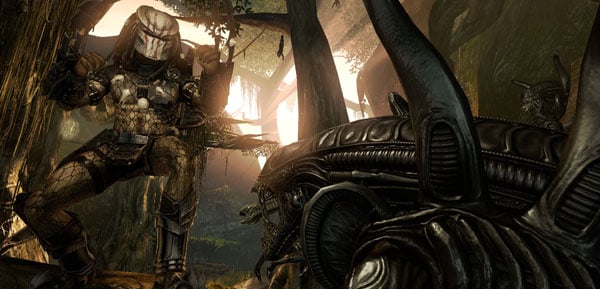
Aliens vs. Predator is a science fiction first-person shooter video game, developed by Rebellion Developments, the team behind the 1999 original PC game, and published by Sega for Microsoft Windows, the PlayStation 3 and the Xbox 360. The game is based on the Alien vs. Predator franchise, a combination of the characters and creatures of the Alien franchise and the Predator franchise. There are three campaigns in the game, one for each race/faction (the Predators, the Aliens and the Colonial Marines), that, while separate in terms of individual plot and gameplay, form one overarching storyline.
Following the storyline of the campaign modes comes the multiplayer aspect of the game. In this Multiplayer section of the game, players face off in various different gametypes in various different ways.
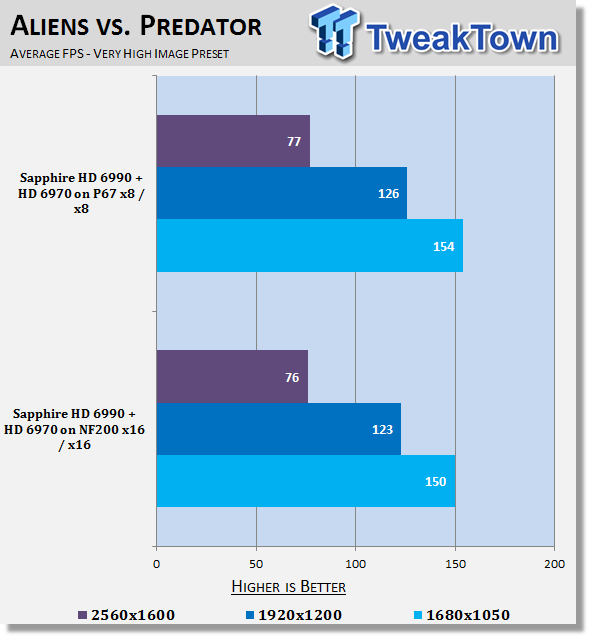
Aliens vs. Predator changes it up a bit; we can see in this instance the x8 / x8 setup is just that little bit faster across the board. It might only be a few FPS, but AvP is a very consistent benchmark, so it's great for this kind of testing.
Benchmarks - Street Fighter IV
Street Fighter IV
Version and / or Patch Used: Standalone Benchmark
Timedemo or Level Used: Built in Benchmark
Developer Homepage: http://www.capcom.com/
Product Homepage: http://www.streetfighter.com/
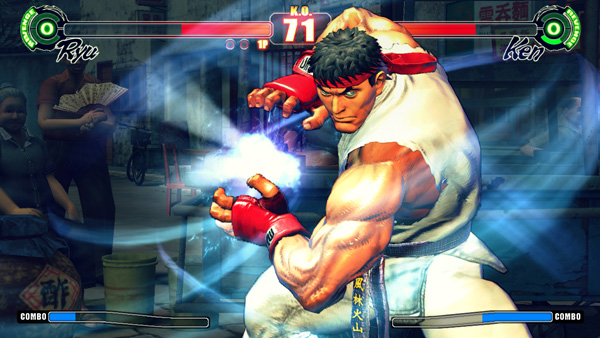
While Street Fighter IV features models and backgrounds rendered in 3D, the gameplay remains on a traditional 2D plane, with the camera having freedom to move in 3D at certain times during fights, for dramatic effect. Producer Yoshinori Ono has stated that he wanted to keep the game closer to Street Fighter II. A new system called "Focus Attacks" ("Saving Attack" for the Japanese version) has been introduced, as well as Ultra moves. The traditional six-button control scheme returns, with new features and special moves integrated into the input system, mixing classic gameplay with additional innovations.
All the characters and environments in Street Fighter IV are rendered as 3D models with polygons, similar to the Street Fighter EX sub-series Capcom produced with Arika. However, there are a couple of key differences. Art director and character designer Daigo Ikeno, who previously worked on Street Fighter III 3rd Strike, opted for non-photorealistic rendering to give them a hand-drawn look, with visual effects accented in calligraphic strokes, ink smudges and ink sprays during the fights.
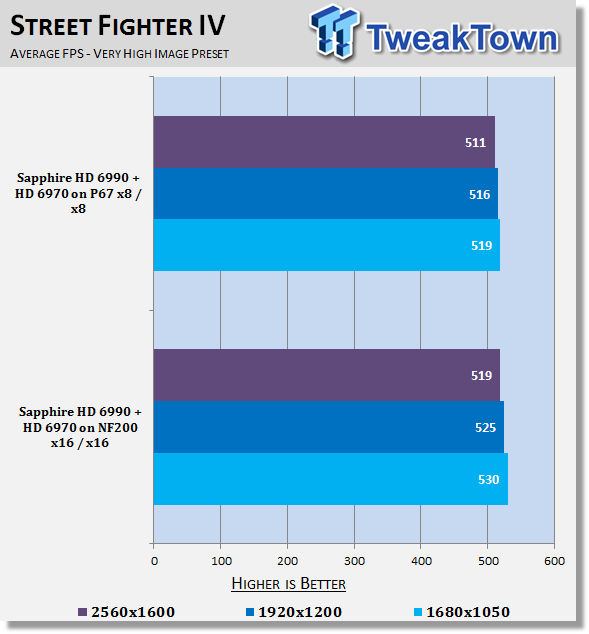
You can see under SF IV where we hit a CPU limitation that the x16 / x16 setup is able to pull out a bit more FPS.
Benchmarks - High Quality AA and AF
High Quality AA and AF
Our high quality tests let us separate the men from the boys and the ladies from the girls. If the cards weren't struggling before they will start to now.
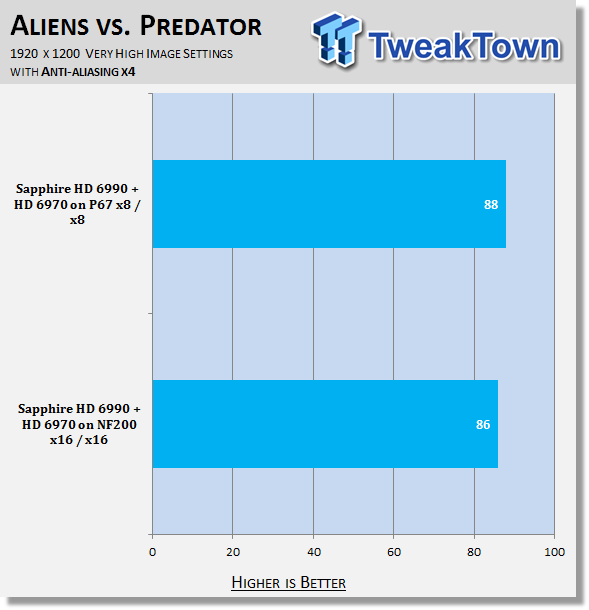
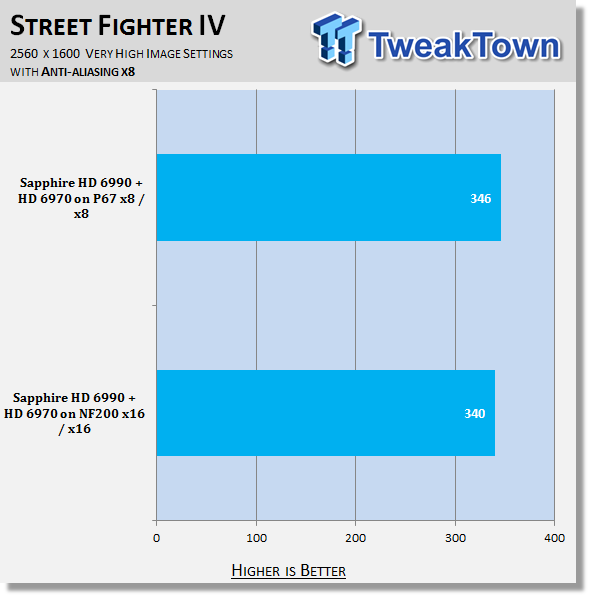
With AA on you can see our x8 / x8 setup is actually a little ahead again. Some interesting results across the board.
Final Thoughts
There's some really interesting results here and if we begin to dissect it a bit we can understand what's going on a bit better. Sometimes we see the x16 / x16 via the NF200 chip run faster, while other times we see the x8 / x8 setup via the native Intel chip run faster.
There seems to be a constancy, though, when we're under high VGA load. Not hitting a CPU brick wall or anything like that, the x8 / x8 via the native P67 chip is a faster setup. When we see lower resolutions and the CPU play a larger picture, the x16 / x16 via the NF200 is faster.
So what's faster? You know, there's probably not a clear winner when it comes to overall speed. The better question would be; so what's better? Well, the x8 / x8 setup that ASUS choose to implement seems to be. Yes, it's not always faster, but when we're all about the video card power, it is the faster setup. The times we see the NF200 setup come out ahead is when we're looking at benchmarks with really high FPS.
We can see under intensive situations like Aliens vs. Predator and Unigine Heaven, the x8 / x8 via the native P67 chip is the better option. When it all comes down to it, there's little difference between the two setups. The decision for ASUS to go down the x8 / x8 path via the Intel chip instead of the better looking x16 / x16 NF200 path seems to be the right decision.
It's so easy to get caught up in the numbers, but they only paint part of the picture. What I'd like to see ASUS do is highlight the x8 / x8 benefits a bit more, because at the moment there's a lot of confusion about the x8 / x8 dual GPU setup specification. With the NF200 present most people think that it's simply an error on the ASUS website. It's not, though, and is clearly intentional and for good reason.
Some interesting results here today and hopefully we've helped clear some of the confusion up around the x8 / x8 vs x16 / x16 argument on the P67 / Z68 platform.

 United
States: Find other tech and computer products like this
over at
United
States: Find other tech and computer products like this
over at  United
Kingdom: Find other tech and computer products like this
over at
United
Kingdom: Find other tech and computer products like this
over at  Australia:
Find other tech and computer products like this over at
Australia:
Find other tech and computer products like this over at  Canada:
Find other tech and computer products like this over at
Canada:
Find other tech and computer products like this over at  Deutschland:
Finde andere Technik- und Computerprodukte wie dieses auf
Deutschland:
Finde andere Technik- und Computerprodukte wie dieses auf